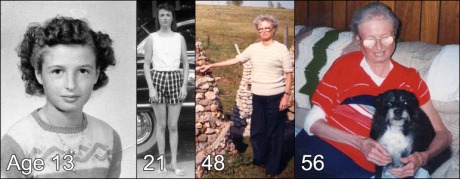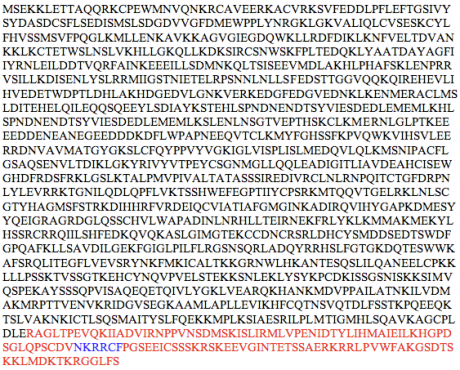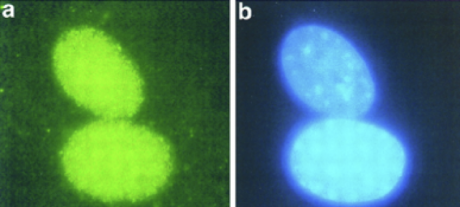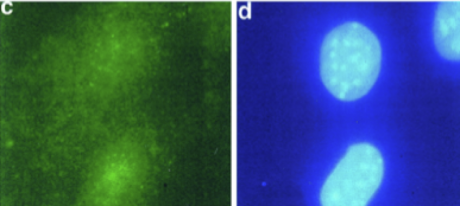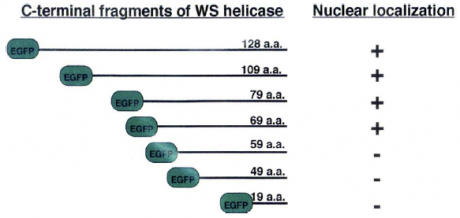This website was created as a project for Genetics 677, an undergraduate course at UW Madison.
Future Direction
Figure 1. Phenotypic age progression of Werner syndrome.
Background
After exploring various genomic and proteomic analysis techniques, the aspect of Werner syndrome found to have the most potential for further research is a sequence of 5 amino acids found within WRN. After reading some conflicting papers, it appears that the C-terminus contains the nucleolar localization signal that controls the location of the active-form of WRN (2). Although studies have shown that loss of function mutations within the C-terminal domain of WRN result in Werner syndrome phenotypes, there does not seem to be extensive research done within the C-terminus. A study done by Matsumoto et al. (1997) discovered the 5 amino acid nucleolar localization signal by examining sequential truncations of the C-terminal. Figure 2 displays the sequence location of the localization signal as well as the C-terminus within the WRN protein.
Figure 2. FASTA sequence of WRN protein with 128 amino acid C-terminal sequence location highlighted in red, and 5 amino acid nucleolar localization signal sequence highlighted in blue.
Figures from the Matsumoto et al. study were unclear, so the basic images visualizing WRN localization are taken from a different study, seen in figure 3 below (3). In order to see the effects of the mutations, indirect immunostaining fluorescently tags WRN protein, as well as the nucleolus. When the two images from the indirect immunostaining are overlapped, one can determine whether or not the mutation yields an intact WRN localization signal. If the WRN stain is found within the nucleolus stain, the localization signal is intact, because it shows that the active protein is in the correct location. This is also what the wild-type control protein immunostaining resembles, and a fluorescent representation of this result can be seen in Figure 3a and 3b (3). If the WRN stain is absent when the images overlap, the mutation causes a disruption of the localization signal. An example of what this would look like can be viewed in figure 3c and 3d (3). This relatively straightforward experiment identifies the specific regions within the C-terminus that are necessary for WRN localization.
Figure 3a, 3b. Expected immunostain results of wild-type control and non-loss-of-function mutations in the C-terminus. WRN protein stained in green. Nucleolus stained in blue.
Figure 3c, 3d. Expected immunostain results of loss-of-function mutations in the C-terminus. WRN protein stained in green. Nucleolus stained in blue.
Hypothesis
A representation of the Matsumoto et al. progressive analysis used to elucidate the 5 amino acid sequence responsible for the WRN nucleolar localization signal can be viewed in figure 4 (2). From the diagram, it can be seen that the localization signal is positioned somewhere around 59 to 69 amino acids from the C-terminus. Site-directed mutagenesis was used to refine and identify a 5 amino acid portion (NKRRCF) that contains the WRN nucleolar localization signal. Further analysis of the functional properties of this region in relation to the C-terminus could ultimately help understand what causes Werner syndrome, and possibly pinpoint future targets for gene therapy. A proposed hypothesis includes the continued use of a mouse model to perform an adenovirus-mediated rescue of wild-type WRN localization. The mouse model already has proven to be an effective Werner syndrome model, and would not have the ethical and financial ramifications involved with chimpanzee research (4). In this proposed hypothesis, an adenovirus containing a wild-type copy of the WRN nucleolar localization signal and corresponding C-terminus would be constructed to infect mice that contain mutations in their WRN C-terminus. In an in vitro study, the expected response of WRN mutant cells would be to pick up the wild-type nucleolar localization signal and successfully facilitate WRN localization to the nucleolus, ultimately rescuing a wild-type phenotype. It is difficult to determine how effective this treatment would be in vivo, because virus therapy is often plagued by complications in genetic material uptake and ineffective incorporation into the genome.
Figure 4. Identification of the nucleolar localization signal within the 128 amino acid C-terminus portion of WRN. Series of expression plasmids encoding fluorescent tags generated by sequential truncations of the C-terminus. + indicates exclusive nucleolar localization (intact localization signal), - indicates disperse localization in both cytoplasm and nucleoplasm (disrupted localization signal).
References
1. (figure 1) Werner Syndrome. Retrieved April 24, 2010 from: http://www.google.com/imgres?imgurl=http://www.pathology.washington.edu/research/werner/werner.jpg&imgrefurl=http://www.pathology.washington.edu/werner&h=302&w=772&sz=129&tbnid=AvdQPjQsbjwJ2M:&tbnh=56&tbnw=142&prev=/images%3Fq%3Dwerner%2Bsyndrome&usg=__paFFstPEhyXxA99FaCEqddzvAGQ=&ei=18fVS4C2JKTuNL3hzc8D&sa=X&oi=image_result&resnum=3&ct=image&ved=0CAoQ9QEwAg
2. Matsumoto, T. , Shimamoto, A. , Goto, M. & Furuichi, Y. Impaired nuclear localization of defective DNA helicases in Werner's syndrome. Nat. Genet. 16, 335–336 (1997).
3. Marciniak, R.A., Lombard, D.B., Johnson, F.B. and Guarente, L. (1998) Nucleolar localization of the Werner syndrome protein in human cells. Proc. Natl Acad. Sci. USA, 95, 6887–6892.
4. Massip L, Garand C, Paquet E, Cogger V et al. (2010). Vitamin C restores healthy aging in a mouse model for Werner syndrome. The FASEB journal 24, 158-174. doi:10.1096/fj.09-137133
2. Matsumoto, T. , Shimamoto, A. , Goto, M. & Furuichi, Y. Impaired nuclear localization of defective DNA helicases in Werner's syndrome. Nat. Genet. 16, 335–336 (1997).
3. Marciniak, R.A., Lombard, D.B., Johnson, F.B. and Guarente, L. (1998) Nucleolar localization of the Werner syndrome protein in human cells. Proc. Natl Acad. Sci. USA, 95, 6887–6892.
4. Massip L, Garand C, Paquet E, Cogger V et al. (2010). Vitamin C restores healthy aging in a mouse model for Werner syndrome. The FASEB journal 24, 158-174. doi:10.1096/fj.09-137133
